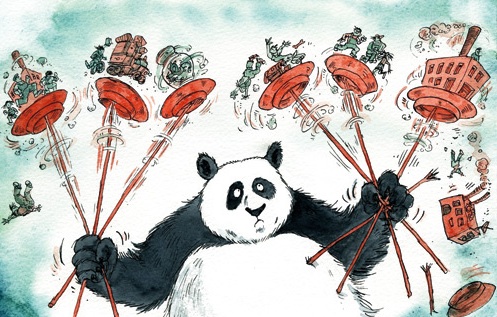China belongs in the TPP.
The Bloomberg editorial board writes: Some are hailing the 12-nation Trans-Pacific Partnership free-trade agreement as a win for American leadership and a defeat for China. Complacency of that kind is shortsighted — and the suggestion that China should be prevented from joining the system in future, which seems to follow, is not just myopic but blind.
Bringing China into the TPP will take time and won’t be easy, but it would serve everybody’s interests. It isn’t too soon to start planning for that goal.
U.S. President Barack Obama has rightly been careful to leave the door open. Next, it’s true, he faces a difficult selling job in Congress — and that task wouldn’t have been any easier if China had already been part of the deal. Nonetheless, a TPP without China would be a huge missed opportunity.
A careful study has estimated that widening the TPP from 12 to 17 countries — adding China, Indonesia, South Korea, the Philippines and Thailand — would triple the deal’s global benefits. Bringing in China, the world’s biggest trading nation, would further strengthen the TPP’s promise as the template for an even wider global agreement.
For all the focus on trade in manufacturing, the biggest potential for gains may lie in services. China’s services sector is one of the world’s most restricted, and a lowering of those barriers would benefit U.S. suppliers handsomely. (According to one estimate, they’d gain another $218 billion by 2025.) China would get better access to the U.S. market in return. More important, though, liberalizing China’s trade in services would hasten the reform of its domestic services providers, dominated today by inefficient state-owned companies jealous of their privileges.
That’s exactly why many Chinese reformers want their country to join the TPP. Efforts at reform have lost momentum lately, with good progress seen in less than a quarter of the 113 areas designated by Beijing. Ring-fenced experiments such as the Shanghai free-trade zone haven’t delivered as hoped. The TPP’s requirements would encourage the government to pick up the pace. The result would be a more productive and stable Chinese economy — good for everyone.
Beijing is discovering the limits of going its own way. Its efforts to set up a regional free-trade agreement without the U.S. are looking less promising. Its new infrastructure bank won’t do much to promote reform at home. Its “one belt, one road” scheme to build infrastructure linking China to the Middle East and Europe offers less potential than greater access to U.S. and Japanese markets.
A TPP that advances the cause of Chinese economic reform and at the same time binds the country into a rule-based multilateral order would be quite a prize. It’s a challenge for China’s leaders, to be sure. They should be given every encouragement to rise to it.

